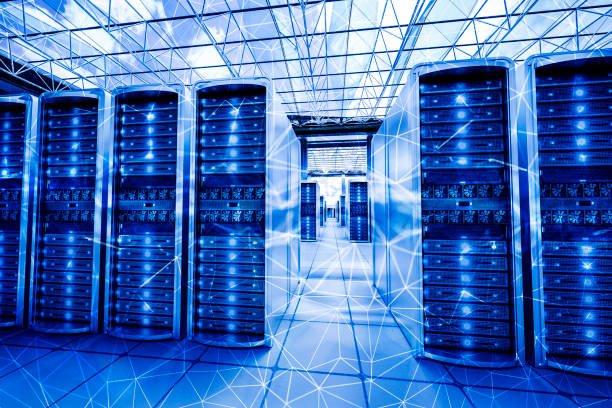What is the Edge Computing
Edge computing is a paradigm that revolutionises the way data is processed and handled in the era of the Internet of Things (IoT) and the rapidly evolving technology landscape. Its basic premise is to bring computational power and data storage closer to where it is needed rather than relying solely on centralised data centres or cloud infrastructure.
what is the Edge Computing
Edge Computing - Edge computing is a paradigm that revolutionises the way data is processed and handled in the era of the Internet of Things (IoT) and the rapidly evolving technology landscape. Its basic premise is to bring computational power and data storage closer to where it is needed rather than relying solely on centralised data centres or cloud infrastructure. This distributed approach to computing offers many benefits including low latency optimised bandwidth usage, improved reliability, increased privacy and security and scalability.
In traditional computing - In traditional computing models data generated by various devices, sensors or endpoints is usually transmitted to a centralised data centre or cloud for processing and analysis. However this approach introduces inherent delays due to the time it takes for the data to travel over the network to reach the processing centre and then return with the desired results. For applications requiring real-time or near-real-time responses such as autonomous vehicles, industrial automation or augmented reality experiences such delays may be unacceptable.
Edge computing overcomes - Edge computing overcomes this challenge by moving computational resources closer to the data source often at the edge of the network. This proximity significantly reduces the latency associated with data transmission as processing occurs locally or in a nearby edge server. As a result critical applications can achieve the responsiveness and agility needed for their operations enabling scenarios such as instant decision making in autonomous vehicles or rapid response to sensor data in industrial environments.
Furthermore, edge computing - Furthermore, edge computing optimises bandwidth usage by performing initial data processing and filtering at the edge before transmitting relevant information to centralised data centres or clouds. By reducing the amount of data sent over the network organisations can reduce congestion, reduce costs and ensure efficient use of available bandwidth resources. This bandwidth optimization is especially important in scenarios where network connectivity is limited, unreliable or expensive.
In addition to latency reduction and bandwidth optimization edge computing increases reliability and resiliency by decentralising computational resources. By distributing processing capabilities across multiple edge nodes organisations can reduce the risks associated with single points of failure. Even if one edge node goes down or experiences connectivity issues the others can continue to operate independently ensuring uninterrupted service availability.
Privacy and security
Privacy and security - Privacy and security considerations also drive the adoption of edge computing architectures. By keeping sensitive data closer to its source and reducing exposure to external networks, organisations can better protect data privacy and confidentiality. Edge computing enables data to be processed and analysed locally reducing the need for To transmit sensitive information over public networks where it may be vulnerable to interception or unauthorised access.
Additionally edge computing - Additionally edge computing architectures provide scalability for organisations to easily adjust to emerging business needs and changing workloads. Deploy additional edge nodes or scale out existing nodes to meet increasing demand without overburdening the centralised infrastructure. This scalability is particularly valuable in dynamic environments where resource requirements fluctuate rapidly or in distributed scenarios where edges are deployed in different geographic locations.
In industries such as manufacturing healthcare transportation and smart cities edge computing is driving innovation and enabling transformative applications and services. From predictive maintenance in the industrial sector to real-time health monitoring in healthcare, edge computing opens up new possibilities for leveraging data effectively and efficiently. By harnessing the power of edge computing organisations can unlock unprecedented agility, responsiveness and intelligence in their operations paving the way for a smarter more connected future.
Types of edge computing
1.Fog calculation
2.Mobile Edge Computing
3.Cloudlet Computing
4. Industrial Edge Computing
5.IoT Gateway Computing
Edge computing - Edge computing includes different architectures to suit specific needs. Fog computing extends the capabilities of the edge by introducing intermediate layers between edge devices and the cloud enabling distributed processing closer to the edge. Mobile edge computing (MEC) focuses on bringing computing resources to the edge of mobile networks enhancing services for mobile users and lots of devices. Cloudlet computing employs small-scale cloud data centres at the edge offering local processing and storage for low-latency applications.
Industrial edge computing optimises industrial processes by processing data locally at the edge of the industrial network enabling real-time monitoring and predictive maintenance. IoT gateway computing has LOTs to do to preprocess data before transmitting it to the cloud. Deploying gateway devices at the edge of the network involves reducing bandwidth usage and latency. These edge computing types provide solutions for diverse use cases ranging from mobile services to industrial automation bringing computation closer to where the data is generated improving efficiency, reducing latency and enhancing overall system performance.
What's Your Reaction?




















